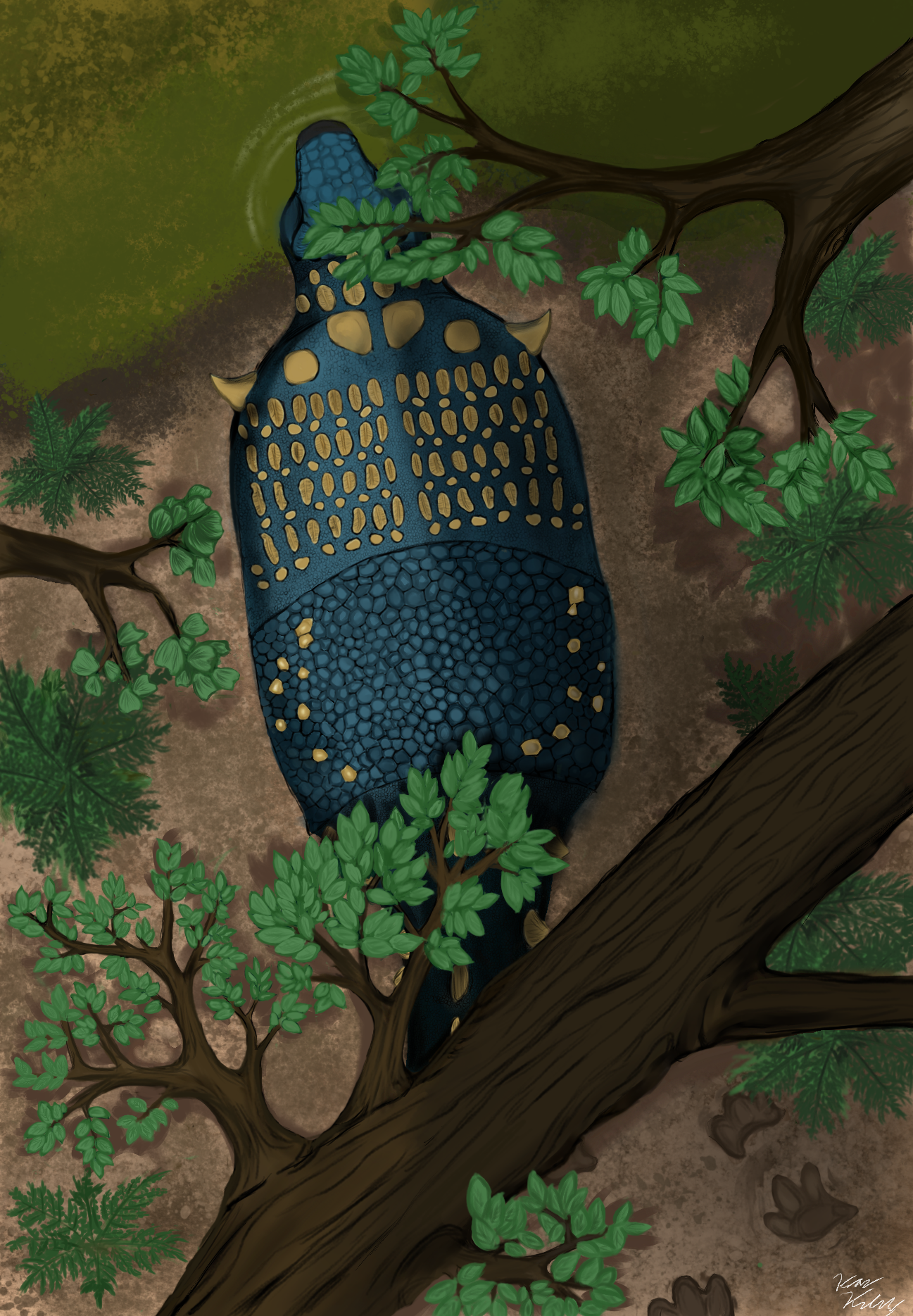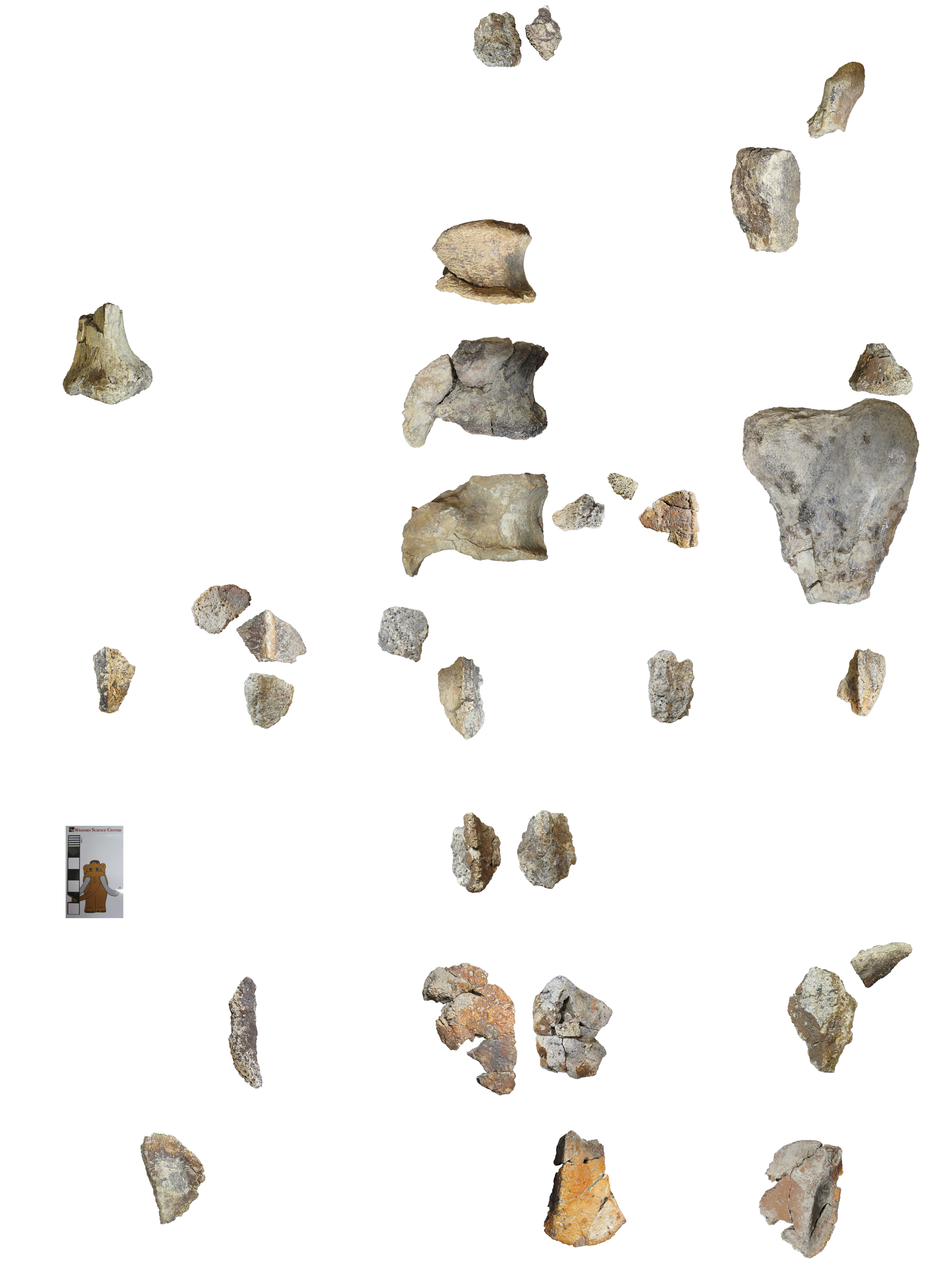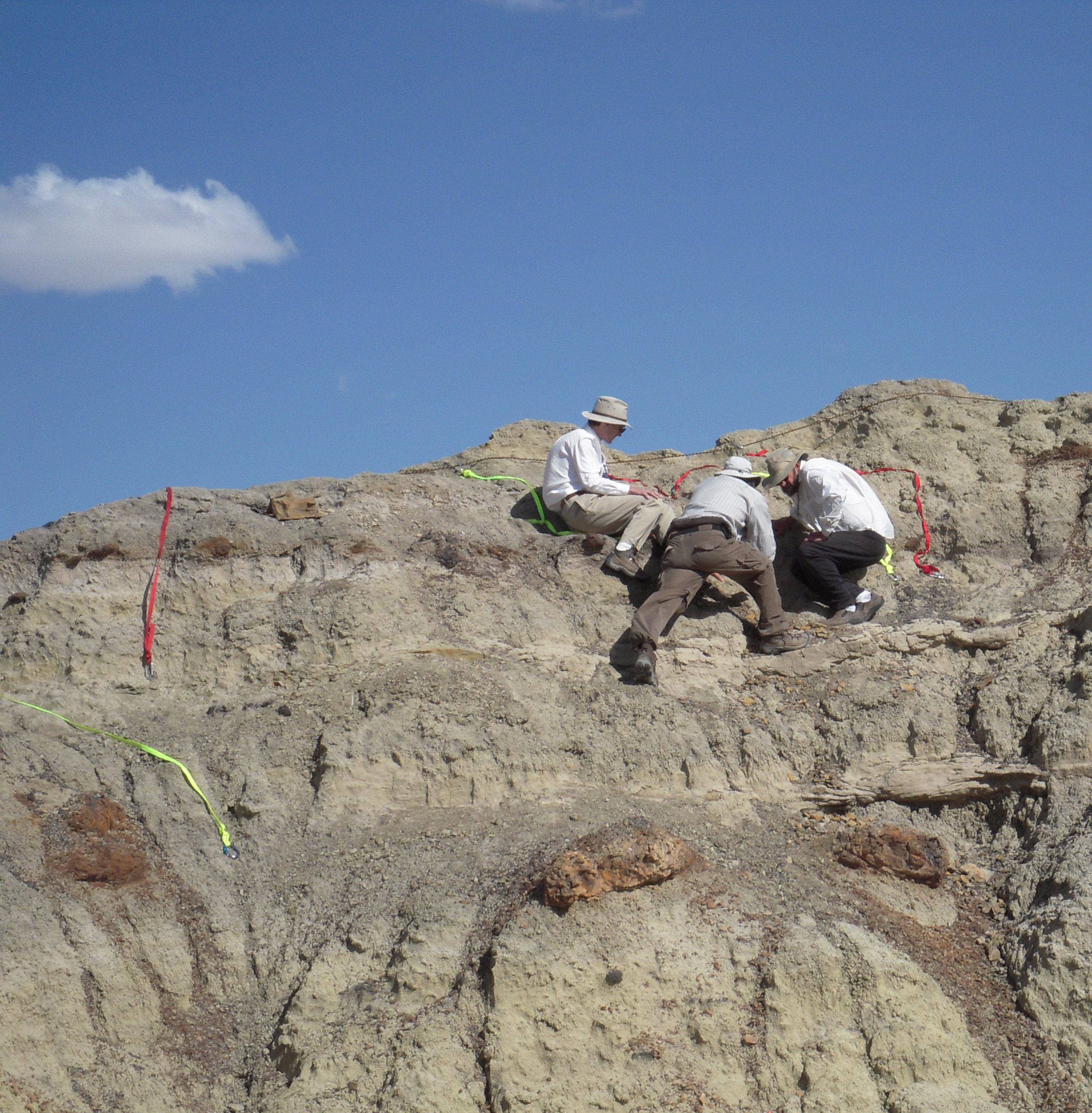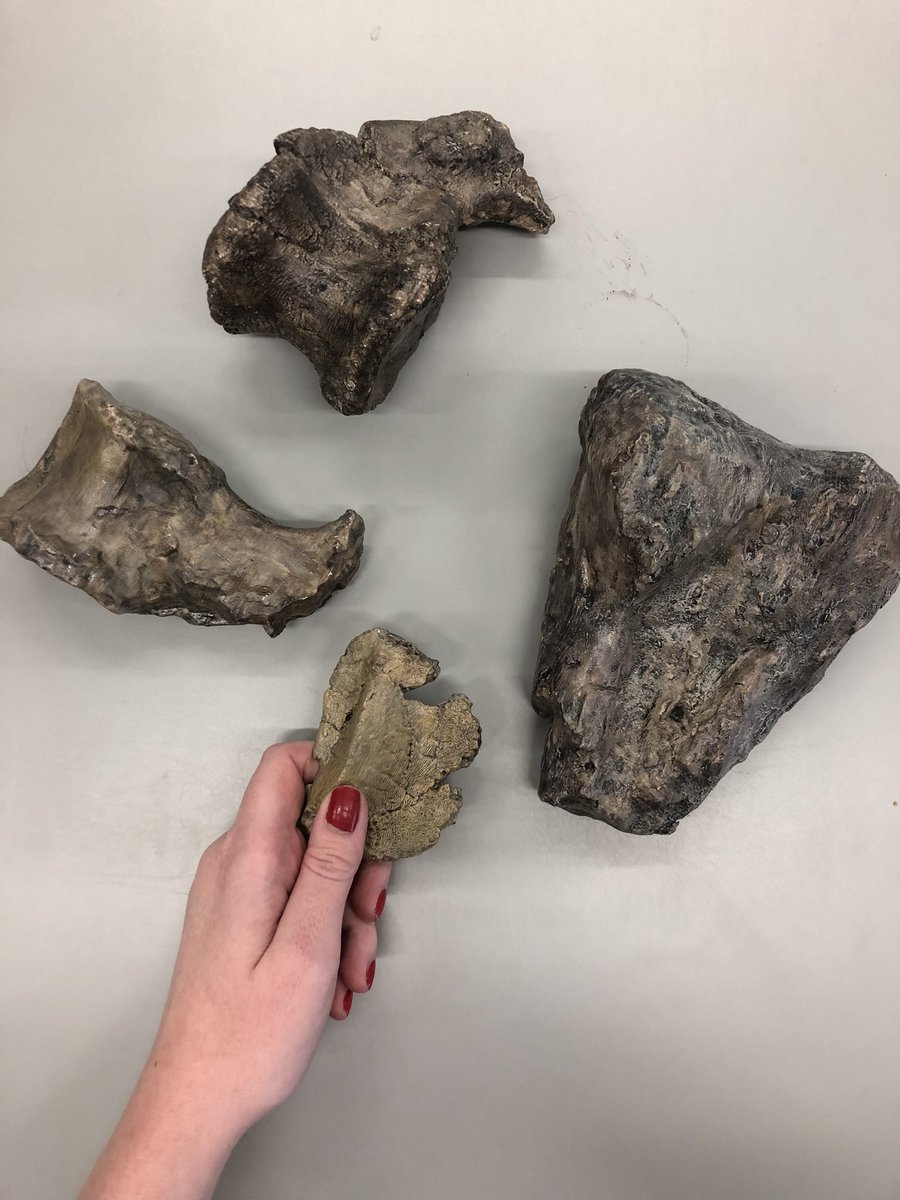 Welcome Invictarx zephyri! This is a very special Fossil Friday for me and everyone here at Western Science Center, and our colleagues at Zuni Dinosaur Institute for Geosciences and Southwest Paleontological Society. The paper naming and describing this new armored plant-eating dinosaur was published today in the online, open-access journal PeerJ. These are the fossils of Invictarx laid out, including vertebrae, parts of the forelimbs, and many osteoderms, the bony armor plates that would have been set in the animal's scaly hide - picture the armored back of an alligator. The image is a composite of three different fossil skeletons found at different spots but in the same rock layer in northwestern New Mexico, and all belonging to Invictarx zephyri.
Welcome Invictarx zephyri! This is a very special Fossil Friday for me and everyone here at Western Science Center, and our colleagues at Zuni Dinosaur Institute for Geosciences and Southwest Paleontological Society. The paper naming and describing this new armored plant-eating dinosaur was published today in the online, open-access journal PeerJ. These are the fossils of Invictarx laid out, including vertebrae, parts of the forelimbs, and many osteoderms, the bony armor plates that would have been set in the animal's scaly hide - picture the armored back of an alligator. The image is a composite of three different fossil skeletons found at different spots but in the same rock layer in northwestern New Mexico, and all belonging to Invictarx zephyri. Invictarx lived 80 million years ago, when New Mexico was covered in lush forests, dank swamps, and sluggish rivers, a far cry from the parched badlands in which my colleagues and I found the fossil remains. Invictarx is a nodosaurid, a group of armored dinosaurs that includes many species from North America and Europe. The osteoderms of Invictarx have a unique set of features that set them apart from all other nodosaurids, indicating that we have a new species on our hands, one never found by paleontologists before. Like other nodosaurids, Invictarx sported armor plates across its neck, back, and hips, which probably provided a formidable defense against predators like tyrannosaurs. We collected the first skeleton of Invictarx in 2011, at a site perched atop a high ridge whipped by 40 mile-per-hour winds, which made for a challenging excavation. With all this in mind, my sister and I took out our Latin dictionaries and came up with the name Invictarx zephyri, the "unconquerable fortress of the western wind".
Invictarx lived 80 million years ago, when New Mexico was covered in lush forests, dank swamps, and sluggish rivers, a far cry from the parched badlands in which my colleagues and I found the fossil remains. Invictarx is a nodosaurid, a group of armored dinosaurs that includes many species from North America and Europe. The osteoderms of Invictarx have a unique set of features that set them apart from all other nodosaurids, indicating that we have a new species on our hands, one never found by paleontologists before. Like other nodosaurids, Invictarx sported armor plates across its neck, back, and hips, which probably provided a formidable defense against predators like tyrannosaurs. We collected the first skeleton of Invictarx in 2011, at a site perched atop a high ridge whipped by 40 mile-per-hour winds, which made for a challenging excavation. With all this in mind, my sister and I took out our Latin dictionaries and came up with the name Invictarx zephyri, the "unconquerable fortress of the western wind". Apart from being a fascinating animal in itself, Invictarx is also the first new species of dinosaur named from the Menefee Formation, the rock layer in which it was discovered. It is the first of many fossil animals and plants from the Menefee that we will describe over the coming years. Of the three specimens, we chose one to serve as the holotype of Invictarx. The holotype of an organism, living or extinct, is the specimen to which the organism's scientific name will always be attached. It serves as the standard by which all future discoveries will be assessed as to whether they represent the same species as the holotype or not. The holotype is accessioned here at the Western Science Center, and is the first holotype in our collections.
Apart from being a fascinating animal in itself, Invictarx is also the first new species of dinosaur named from the Menefee Formation, the rock layer in which it was discovered. It is the first of many fossil animals and plants from the Menefee that we will describe over the coming years. Of the three specimens, we chose one to serve as the holotype of Invictarx. The holotype of an organism, living or extinct, is the specimen to which the organism's scientific name will always be attached. It serves as the standard by which all future discoveries will be assessed as to whether they represent the same species as the holotype or not. The holotype is accessioned here at the Western Science Center, and is the first holotype in our collections.  My colleagues and I return to New Mexico every summer to search for dinosaurs and other fossils in the Menefee Formation. We will very probably find additional fossils of Invictarx that will tell us more about its appearance and evolution. Naming it was really just the first step!Post by Curator Dr. Andrew McDonald
My colleagues and I return to New Mexico every summer to search for dinosaurs and other fossils in the Menefee Formation. We will very probably find additional fossils of Invictarx that will tell us more about its appearance and evolution. Naming it was really just the first step!Post by Curator Dr. Andrew McDonald
